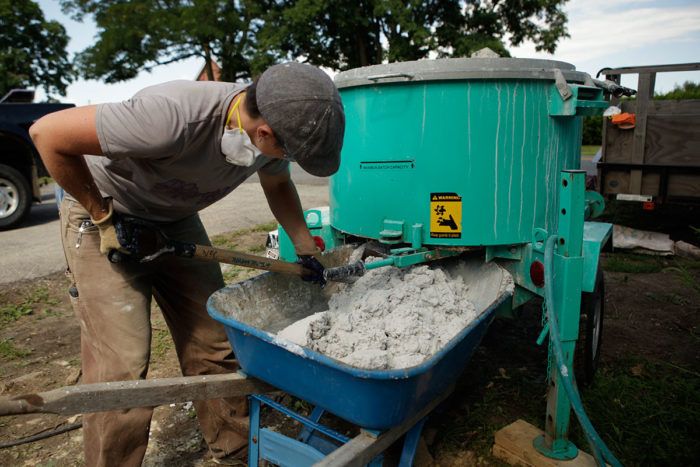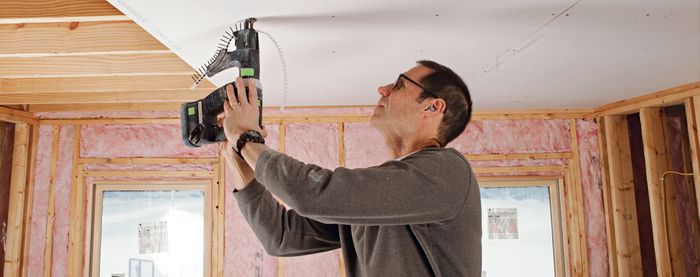From Rock to Dust to Rock Again
An in-depth look at mixing hydrated lime to create plaster.

Lime plaster has been in use by various cultures around the world going back millennia. While it has more or less fallen off the map in the U.S., it’s still used in restoration work, and it has a growing fan base in the green-building community.
Lime is made by baking crushed limestone (calcium carbonate) in a kiln, which drives carbon dioxide out of the crushed rock, creating a compound called quicklime (calcium oxide). To make the lime used in most lime plasters, the quicklime is soaked—or slaked—in water, making a more chemically stable product called hydrated lime (calcium hydroxide), which is what you’ll typically find bagged for sale at your local masonry supplier.
To make basic lime plaster, the hydrated lime is mixed with an aggregate—typically clean, sharp sand—and a little bit of water. Unlike cement stucco or gypsum plaster, hydrated lime plaster sets only when exposed to air, and will stay soft indefinitely if kept sealed. This is distinct from hydraulic lime, which, like hydraulic cement, sets under water even without exposure to air.
Hydrated lime hardens in two ways—first by drying (which shouldn’t happen too quickly if it’s to achieve its maximum strength potential), but more importantly by curing. During curing, hydrated lime absorbs carbon dioxide from the air and recrystallizes into limestone. It literally turns back into rock right on the wall. This process is usually referred to as the “lime cycle.” Since the carbon dioxide that’s driven off to create lime is reabsorbed during the curing process, it’s generally considered a relatively “green” building material. While it takes heat to make the lime, it takes a lot less heat to make lime than to make portland cement, which is also made from limestone.
Along with strength are numerous other interesting qualities. Lime plaster is alkaline, making it highly resistant to organic growth, including mold and mildew. This is why it was historically used as a finish in hospitals and milking parlors—it has a natural ability to maintain indoor-air quality. That same characteristic today makes it a good fit for homes whose occupants are sensitive to chemicals commonly found in building materials.
It can also make a home more comfortable. Lime plaster’s mass and high vapor permeability allow it to store and release heat and moisture with swings in temperature and humidity, modulating the highs and lows of the day to make living spaces more comfortable.
While hard, lime plasters maintain some flexibility, and can bend over time without breaking as a house settles. And because there is always some material that hasn’t yet cured beneath the surface, lime plasters have the unusual ability to self-heal small cracks. You won’t find that feature in drywall.
For more on plastering:
- A Hybrid Approach to Lime Plaster
- VIDEO: Lime-Plaster Installation
- A Short Guide to Lime-Plaster Trowels
- Add Color to Lime-Plaster Walls
- Lime-Plaster Transformation: A Slideshow


View Comments
Would incorporating a course-woven cloth on the wall enhance crack prevention of the lime plaster? Would it be worth the effort? I'm interested in trying limestone plaster, but have apprehension as someone who lives in earthquake-prone California.